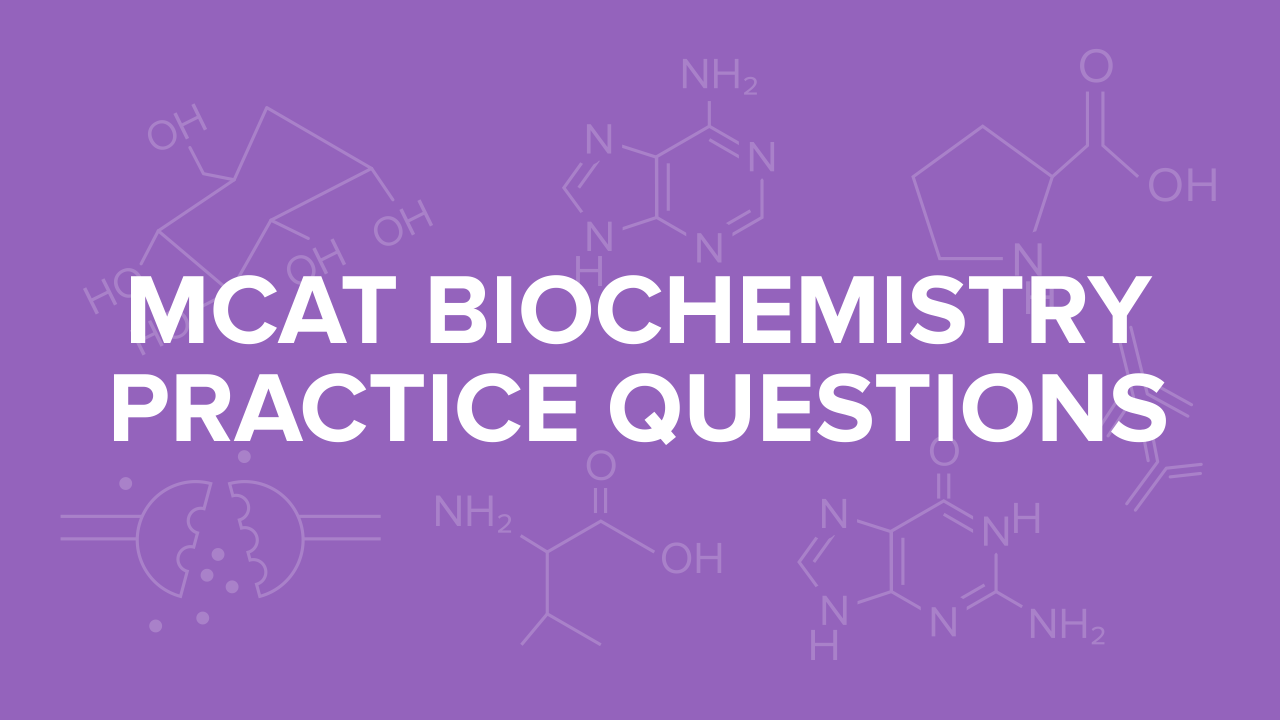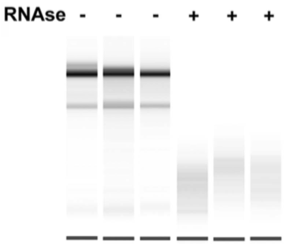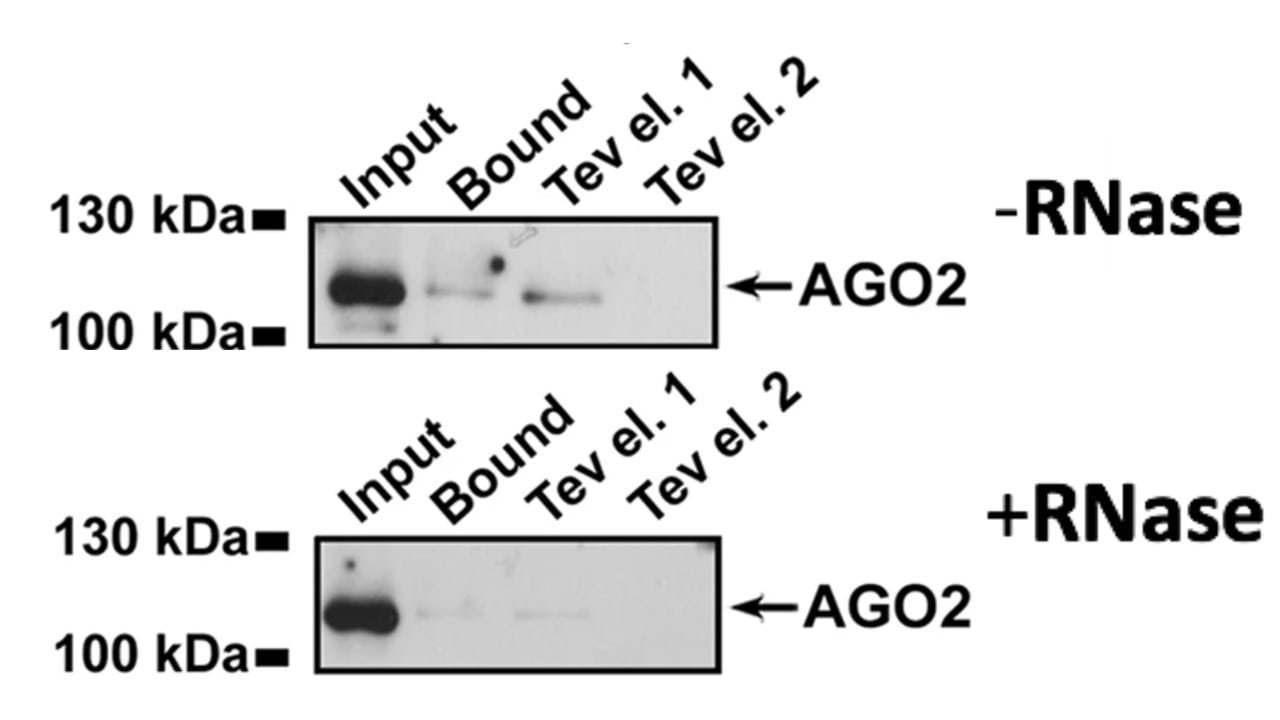MCAT Biochemistry Practice Questions
/Prepare for the MCAT Biochemistry section with practice questions
try solving curated mcat biochemistry practice questions
----
Introduction
You are ready to sit down and study for the MCAT, which is one of the most important pieces of your medical school application. Achieving a great MCAT score can greatly increase your chances of hearing “We’re pleased to inform you…” from the medical school of your dreams.
Your test date looms in the future, and you’re in the thick of your test preparation. You’ve created a perfect study schedule and have started diving into your content review. But, you find that content review is not enough to score well on the MCAT! You need to be able to apply your content knowledge to the rest of the exam.
Biochemistry is one of the most heavily tested subjects on the MCAT. From enzymes to experimental techniques (link experimental techniques page), biochemistry questions will make up a portion of both your chemistry/physics and biology/biochemistry section scores.
Use the following three passages and five standalone questions to test your ability to apply your biochemistry knowledge to real, MCAT-style passages. You’ll notice that each explanation has suggestions for what you should review if you miss a question. Let’s get started, and good luck!
----
MCAT Biochemistry Practice Passage #1
Nuclear estrogen receptor 2 (ERB2) suppresses tumor growth and modulates cancer cell proliferation in breast cancer (BC). Loss of ERB2 is shown to correlate with early stages of ductal and breast tumors, though the specific mechanism is largely unknown. Researchers hypothesized that identifying and characterizing multiprotein complexes involved in ERB2 function might identify the molecular basis for the role of protein in BC.
Using interaction proteomics, which combines native protein complex purification and mass spectroscopy, it was determined that ERB2 interacts with other proteins in BC cells, and this interaction is mediated by one or more RNAs.
To probe the effect of RNA on ERB2 complex formation, researchers treated a nuclear extract containing ERB2 and its putative binding partners with RNase. The results from the experiment are shown in Figure 1.
Figure 1. Western blot analysis of ERB2 migration without or without RNase.
Next, the researchers analyzed ERB2 complex formation with putative binding partner AGO2 in the absence and presence of RNase. The results are shown in Figure 2. The researchers analyzed the nuclear extract (input), the amount of bound AGO2, and two TEV IgG-Sepharose column eluents using a Western blot for AGO2.
Figure 2. Western blot analysis of AGO2 with and without RNase.
1. Which of the following most likely contributes the greatest amount stability to the ERB2-AGO2 interaction?
A) Disulfide bridges
B) Hydrogen bonding
C) Hydrophobic effect
D) Salt bridge
2. Researchers decide to purify ERB2 using a nickel column. They most likely prepare ERB2 with a:
A) C-terminal His6 tag
B) N-terminal Ala6 tag
C) C-terminal Glu8 tag
D) N-terminal Val8 tag
3. To interpret the results of Figure 1, the researchers must assume all of the following EXCEPT:
A) Equal concentrations of RNase were used in the RNase + lanes.
B) Equal concentrations of nuclear extract were loaded in all of the lanes.
C) Equal amounts of ERB in complex with other proteins form in all of the lanes after RNase treatment.
D) The antibody for ERB is specific to the protein at a site distinct from protein interaction sites.
4. Why do researchers include the input lanes in both RNase conditions in Figure 2?
A) To determine the concentration of AGO2 before the experiment
B) To ensure that equal amounts of AGO2 were present before the experimental treatment
C) To measure the amount of ERB2 complex without RNase
D) To increase the likelihood of binding events for later conditions
5. Which of the following conclusions is best supported by Figure 2?
A) An RNA molecule plays a role in the AGO2-ERB2 interaction
B) ERB2 is not expressed when RNase is present
C) AGO2 binds ERB2 more tightly in the absence of RNA
D) AGO2 is upregulated when RNase is present
Answer key for practice passage #1
1. The correct answer is C. The hydrophobic effect provides the most energy stabilization for interactions between proteins (choice C is correct). Disulfide and salt bridges are formed within a protein and not between two different proteins (choices A and D are incorrect). Hydrogen bonding contributes weakly, if at all (choice B is incorrect).
Review hydrophobic effect and thermodynamics.
2. The correct answer is A. His6 tags are added to proteins (at either the N- or C-terminus) to allow the tagged proteins to bind to columns (choice A is correct). The other tags are generally not used in experiments, and they would not be used for a nickel column as His-tags are standard.
Review protein purification techniques and different types of purification columns (i.e. cation-anion exchange, size exclusion, nickel, etc.)
3. The correct answer is C. The western blot provides information on whether or not the ERB2 protein is bound to another protein. When ERB2 runs higher, that means it is bound to another protein as it migrates more slowly through the gel. When ERB2 runs lower, that means it is unbound. Since the ERB2 is seen at different levels in the gel, the researchers cannot assume that equal amounts of ERB2 are in the complex after treatment (choice C is correct). Equal RNase should be used as a control (choice A is incorrect). Equal nuclear extract should be used as a control (choice B is incorrect). In order for the ERB2 antibody to work, it must be able to bind the protein, and it cannot bind if another protein is in the way (choice D is incorrect).
Review Western blotting technique and use of antibodies in molecular biology.
4. The correct answer is B. This lane is a control to ensure that later treatments are not the result of starting with different amounts of material. Since AGO2 is being measured here (as indicated in the figure caption), choice B is correct. Western blots do not provide information about the concentration of protein (choice A is incorrect). AGO2 is being targeted, not ERB2 (choice C is incorrect). Measuring the control will not increase the likelihood for binding events at later experimental stages (choice D is incorrect).
Review Western blotting technique.
5. The correct answer is A. From Figure 2, it is observed that the amount of AGO2 bound to ERB2 decreases after RNase treatment. Therefore, it is reasonable to conclude that an RNA molecule is involved in the AGO2-ERB2 interaction (choice A is correct; choice C is incorrect). ERB2 is not being measured in the Western blot presented in Figure 2 (choice B is incorrect). The input level of AGO2 is the same with or without the RNase, so AGO2 is not upregulated when RNase is present (choice D is incorrect).
Review Western blotting technique.
Gain instant access to the most digestible and comprehensive MCAT content resources available. 60+ guides covering every content area. Subscribe today to lock in the current investments, which will be increasing in the future for new subscribers.




